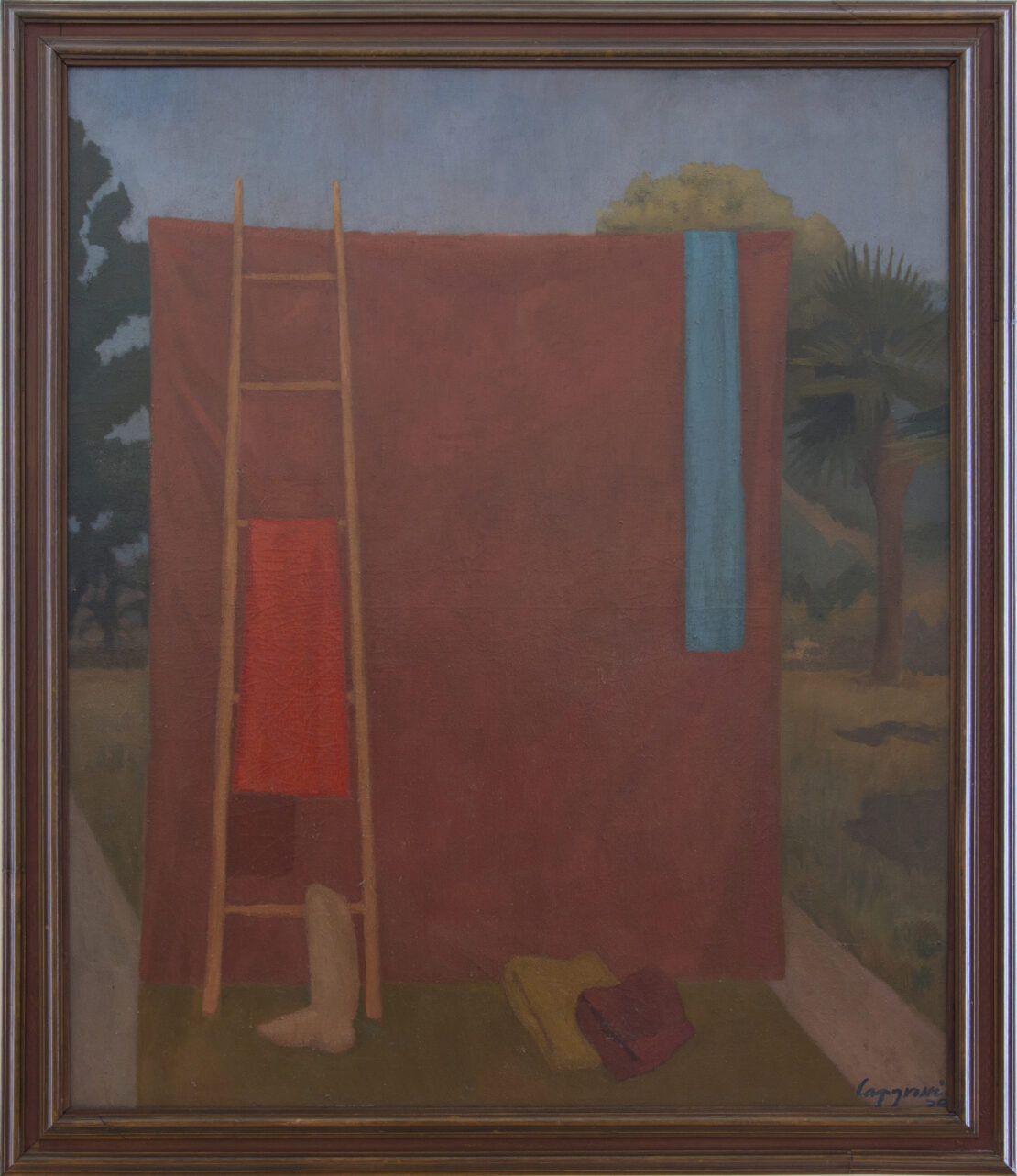Illusionista di campagna (La tenda rossa), 1938
Giuseppe Capogrossi (Rome 1900 – 1972)
Illusionista di campagna (La tenda rossa)
oil on canvas
1938
cm 112,2 x 95,5
At the 1939 Rome Quadriennale, Giuseppe Capogrossi had his own space in which was displayed a group of no fewer than 16 different works of large dimensions.
The subject of this painting is absence: the illusionist who, like the painter, uses his magic to make himself disappear, showcasing a world that is somehow altered and impossible within the seemingly mundane. A curtain held up by uncertain means and various scattered objects underline the absence of the mysterious and invisible subject.
A few years earlier, Roberti Melli, a peer of the artist, summarised the poetic characters of Capogrossi as follows: “The artistic product is as if suspended in the air, its forms evoked as if unexpectedly adopting the manner of silent speech and resting lightly on the surfaces with the purpose of deities and ghosts. All of this is serene, in its magical place, as if enveloped by a destiny, and giving the impression that the slightest imbalance cannot help but provoke the frenzy, open the way to the precipice, unleash the storm. Between the object created and the viewer there is a partition: expectation.”
A graduate of law, in 1923 he attends Felice Carena’s Libera Scuola di Nudo, among the most renowned institutions of its day in Rome.
From 1927 to 1933, he travels to Paris on multiple occasions, participating in the first collectives, where he expands on a figurative and tonal painting style that recalls classical Italy: characteristics that see him identified with a group of Italian artists referred to as the Ecole de Rome [the Roman School].
From then on, he participates in various exhibitions in private galleries and public spaces.
With the gradual desertion of the figurative and following a brief dalliance with the neo-Cubist style (1947-1949), he comes to a meticulous and personal abstract style typified by a single form-symbol that, when combined in infinite variations, forms the space of the painting. He displays the works of his new style at the most renowned Italian and global exhibitions.
Starting in 1940, he teaches a course on the drawn figure at the high school of the arts in Rome. Here he stays until 1966, when he is offered a position as chair of decorative art at the Accademia di Belle Arti in Naples until 1970.
Over the course of his lengthy artistic career, he is the recipient of numerous awards and honours: in 1971 the Ministry of Education confers upon him the Gold Medal for Cultural Merit.
